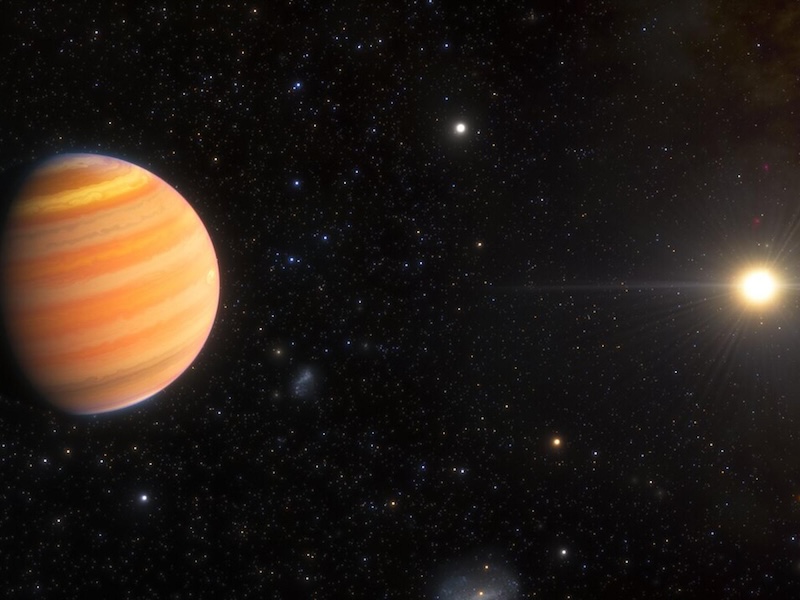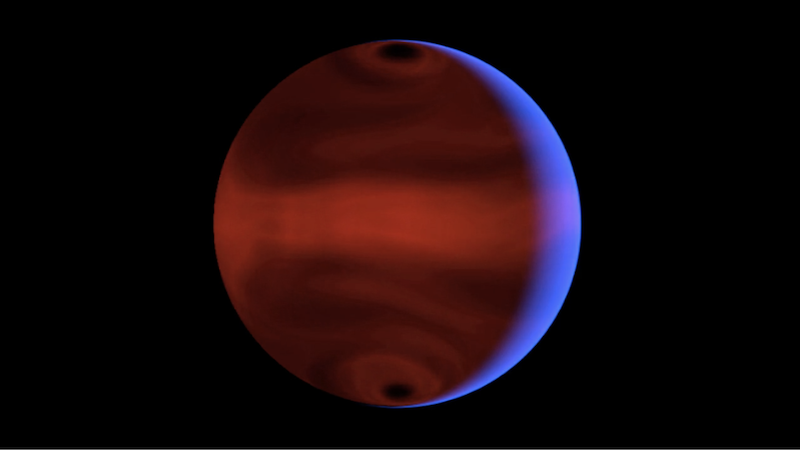- The exoplanet TIC 241249530 has an extremely elongated, cucumber-shaped orbit.making a sharp “hairpin turn” each time it approaches its star.
- The exoplanet also orbits its star in reverse.another rare phenomenon among observed transiting exoplanets.
- Scientists believe TIC 241249530 could be transforming into a hot Jupiteroffering information on planetary migration processes.
Exoplanet with an extreme orbit
We tend to think of planets orbiting their stars in nice, tidy circles. But that's not always true, even in our own solar system. Now, astronomers have discovered a exoplanet with a greatly elongated orbit. A team of astronomers, led by Pennsylvania State University, saying On July 17, 2024, it was announced that the orbit is the most extreme ever seen among exoplanets transiting their stars. The shape of the orbit is more like a cucumber than a circle. The “hairpin-curve” exoplanet makes a sharp turn every time it approaches the star.
In addition, the planet orbits its star in reverse, something that is also not often observed. Although the planet is only close to its star for part of its orbit, the observations provide clues as to how Hot Jupiter Exoplanets are formed.
The researchers published his peer reviewed Findings about the unusual planet in Nature July 17, 2024.
The unusual oblong orbit of the 'hairpin curve' exoplanet ICT 241249530. Video via Gemini International Observatory/ NOIR Laboratory/ NSF/ AURA/ KPNO/ R. Proctor/ J. da Silva/ Spaceengine/ M. Zamani/ ESO/ L. Calçada/ M. Kornmesser/ N. Bartmann/ YouTube.
The hairpin-shaped exoplanet has an elongated orbit
Astronomers have seen exoplanets with elongated orbits before, but the orbit of this planet, TIC 241249530, is In fact stretched out. It is shaped like a cucumber. Therefore, every time the planet passes closer to its star, it makes a kind of “sudden turn.” As co-author Suvrath Mahadevan At Penn State saying:
We captured this massive planet making a sharp hairpin turn as it passed close to its star. Such eccentric transiting planets are incredibly rare, and it's truly amazing that we were able to discover the most eccentric one.
Some planets have almost perfectly circular orbits. Others are more elongated. But this planet's orbit is the most extreme yet observed among exoplanets that transit (pass in front of) their star as seen from Earth. orbital eccentricity The deviation from a perfect circle is 0.94. For comparison, the orbit of the dwarf planet Pluto is also very elongated, but has an orbital eccentricity of only 0.25. The Earth's orbit is much more circular, at only 0.02.
In the case of TIC 241249530, researchers said its highly eccentric orbit means there will be large temperature differences. When it is furthest from its star, temperatures are similar to a summer day on Earth, but at its closest, it is scorching hot.
The planet orbits its star about once every six months.
Its orbit is also upside down.
Not only is the hairpin-shaped exoplanet's orbit unusual, but the planet also orbits its star in reverse. That means it orbits in the opposite direction to the star's rotation, something astronomers rarely observe.
That, combined with its strangely elongated orbit, makes it a rare find for astronomers.

Will ‘hairpin’ exoplanet become a hot Jupiter?
Furthermore, the discovery suggests that TIC 241249530 could be in the process of becoming a hot Jupiter. Hot Jupiters are gas giant planets that orbit close to their stars and are therefore extremely hot. Scientists believe that “normal” Jupiters sometimes migrate from highly eccentric orbits to tighter, more circular orbits around their stars.
Primary author Arvind Gupta at Penn State and NOIRLab saying:
While we can't go back and watch the planetary migration process in real time, this exoplanet serves as a snapshot of the migration process of sorts. Planets like this are hard to find, and we hope it will help us unravel the history of hot Jupiter's formation.
Astronomers have discovered many hot Jupiters so far, but they are also looking for planets that are likely… become Hot Jupiters in the future. TIC 241249530 seems to fit that profile, as Gupta noted:
Astronomers have been searching for exoplanets that are likely precursors to hot Jupiters, or are intermediate products of the migration process, for more than two decades, so I was surprised — and excited — to find one.
Detection and characterization of ICT 241249530
Astronomers first discovered TIC 241249530 using NASA's Transiting Exoplanet Survey Satellite (Tess) in January 2020. They then confirmed it further with the WIYN 3.5-meter telescope at the National Science Foundation's (NSF) Kitt Peak National Observatory (KPNO). The NN-EXPLORE (NN-EXPLORE) exoplanet and star imagerNessi) from WIYN helped block the twinkling of the planet's star caused by Earth's atmosphere. The researchers then used the NEID Spectrograph and the Habitable Zone Planet Finder (FHP) spectrograph to analyze the light coming from TIC 241249530.
Analysis of the planet also confirmed that it is about five times more massive than Jupiter.

New record holder
TIC 241249530 now holds the record for the transiting exoplanet with the most eccentric orbit. Previously, HD80606b kept that title.
Jason Wright is a professor of astronomy and astrophysics at Penn State and supervised the new study. explained:
This is the most eccentric transiting planet known and will prove to be just as important as the previous record holder, HD 80606b, which also has an odd orbit far out of alignment with the rotation of its host star. Both of these highly eccentric planets have been “caught in the act” of evolving into hot Jupiter status. Like HD80606b, this planet is many times the mass of Jupiter, suggesting that this channel for hot Jupiter formation might be one that only the most massive planets can take.
Wright added:
We are particularly interested in what we can learn about the dynamics of this planet's atmosphere after it makes one of its scorchingly close passes around its star. Telescopes like NASA's James Webb Space Telescope They have the sensitivity to investigate changes in the atmosphere of this newly discovered exoplanet as it experiences rapid warming, so there is still much more the team needs to learn about the exoplanet.
Scientists are excited about the first results for TIC 241249530 and NEID in general. Co-author Andrea Lina PhD student at Penn State, said:
It is very exciting to see that NEID has achieved such excellent scientific results in just a few years of operations. We are just getting started and I look forward to seeing what we can achieve in the future.
In short: Astronomers have discovered an exoplanet with an extremely elongated orbit that spins counter-clockwise to its star and could eventually become a hot Jupiter.
Source: A hot Jupiter progenitor in a super-eccentric retrograde orbit
By Pennsylvania State University
Read more: The unexpected and exotic features of hot Jupiters












Leave feedback about this